Spendor D7.2

 So many speaker brands now have ‘cor-blimey’ models with high-tech drive units sporting the sort of cone materials and dramatic finishes that you’d expect on a supercar. Spendor on the other hand, has shrewdly positioned itself away from the fray of many modern speaker designs instead making more conventional boxes in a variety of sizes that simply sound good.
So many speaker brands now have ‘cor-blimey’ models with high-tech drive units sporting the sort of cone materials and dramatic finishes that you’d expect on a supercar. Spendor on the other hand, has shrewdly positioned itself away from the fray of many modern speaker designs instead making more conventional boxes in a variety of sizes that simply sound good.
Managing director Philip Swift is effectively repeating the success he had with former brand Audiolab – positioning Spendor as a purveyor of high-quality, no-nonsense, ‘sensible shoes’ hi-fi. The great thing is that because its speakers never look strikingly modern, they never seem outdated. Instead there’s a sense of classic timelessness – the feeling of a purposeful product that just gets on with the job. His approach has worked well, and the company now has a clearly delineated model range comprising the entry-level A line, the higher end D line and the traditional Classic line, which gives a traditional Spendor look in a modern setting.
As its name suggests, the D7.2 is a reworking of the D7 medium-sized floorstander (HFC 370), one of just two models in the D line. It’s a largish 2.5-way design that’s just about the right size for most UK listening rooms; the larger D9.2 (£7,700) may prove too big. It has been heavily reworked since the original, but this amounts to a lot of subtle tweaks rather than a radical revamp. Effectively the design team has gone over the original speaker’s weaker points and tweaked them.
The cabinet has been made more rigid with extra bracing and quieter with Spendor Dynamic Damping. The plinths have been redesigned and are now smaller and slimmer, which gives a substantially neater look. The finishes now comprise black ash, cherry, dark walnut, natural oak and satin white as pictured. This is helped by the use of magnetically mounted grilles, meaning no unsightly mounting accoutrements on the front baffle.
The driver complement comprises a mid/bass drive unit with Spendor’s EP77 polymer cone, in 180mm guise. Mating to this is a low-frequency unit with a two-part bonded Kevlar composite cone. Both drivers feature cast magnesium alloy chassis, high-efficiency motor systems, optimised electro-dynamic damping, plus new polymer surrounds. Above these two is the company’s Linear Pressure Zone tweeter, which is built around a stainless steel front plate that forms a damped acoustic chamber in front of a lightweight woven polyamide diaphragm. A phase-correcting micro foil is fitted to equalise soundwave path lengths across the diaphragm surface, it generates a symmetrical pressure environment on both faces of the tweeter diaphragm so it operates in a balanced linear mode.
I’m not a big fan of ported speaker cabinets as I think they compromise the timing slightly, even if they do bring other benefits. Spendor’s 5G Linear flow port is a little different, with an aerodynamically profiled central baffle that creates a tapered twin-venturi port. This manages the airflow along the length of the port, making for low phase shift. The crossover has been tweaked with precision-wound inductors and high-linearity plastic film capacitors. High-quality terminals are fitted around the back of the cabinet; they are recessed, but are a bit fiddly if you use bare-wire connectors.
Sound quality
All the modifications have brought about a subtle but worthwhile improvement to the performance, without throwing out Spendor’s trademark civilised sound. What we hear is more of the music and less of the cabinet and drivers. The previous model was already pleasingly neutral and open, but the D7.2 goes much further. It’s as if Philip Swift and his team have zeroed in on the weaker aspects of the older speaker and sorted them in a focused and surgical way. The result is a crisp, open and even-sounding loudspeaker that’s now impressively engaging and surprisingly dynamic – especially for a floorstander of this price.
When it comes to tonality, the original wasn’t the most transparent but was well integrated from bottom to top and pleasingly warm. The new model doesn’t wander far from this path, but does sound fractionally lighter and brighter; there’s a little extra sparkle right across the frequency range. The Yamaha DX7 synthesiser on Sade’s The Sweetest Taboo sounds more atmospheric, with a sense that you’re able to hear the harmonics a little better. There’s more space around vocals and a lighter and more spry sound to the cymbals. This is all subtle, but makes for a more lifelike sound – despite remaining smooth and sophisticated.
One of the reasons for the D7.2 sounding subjectively better lit than its predecessor is a reduction in bass overhang. There wasn’t that much there before, but it’s definitely been taken down a notch; this subtle reduction in upper bass/lower mid ‘bloom’ means that electronic music such as Living In The Past by Manix is tauter, tighter and more expressive. The cabinet appears to be storing less energy and so bass notes start and stop faster. This works in the midband too; the reverb tails of hard hit snare drums are more noticeable, with inky black silences between the beats. It’s a small improvement, but makes music a good deal more fun.
I was impressed by the soundstaging of the original D7, but this is better still. It’s not the most commanding speaker, but can still throw stereo images around the room with real zeal, and the new version is even better. Instruments have a more defined location in the recorded acoustic, as I discover when I cue up Al Stewart’s Year Of The Cat. The piano work is more tactile with a greater sense of an actual instrument in one’s listening room. Added to this is the pleasingly vibrant way the D7.2 delivers it – giving a smooth but very tactile rendition of what is being played. I’m also impressed by how his voice hovers in the air in an ethereal way, and hangs back quite a way – showing this new speaker is capable of really fine depth perspective.
The D7.2 is good at micro dynamics too; showcasing delicate piano playing with its tender accenting. This, and its transparent and transient speed, make for an emotionally communicative speaker that impresses on both a hi-fi and an emotional level. Donald Byrd’s Street Lady really sings; its tightly syncopated playing can be a ‘tripwire’ for some bigger loudspeakers, yet here remains fleet of foot and in control. This isn’t a particularly euphoric or even exuberant design, yet it is more engaging than its already decent predecessor.
Conclusion
I really like the D7.2. Some might hanker after a deeper, more extended and powerful bass – but there is the larger D9.2 for that. Others will want a bigger, wider and more visceral sound – for which Spendor can sell you its £19,800 Classic 200Ti flagship. As it stands, this is a great compromise – a modestly sized, highly capable, do-it-all loudspeaker that’s well worth an audition. DP
DETAILS
Product: Spendor D7.2
Price: £4,500
Origin: UK
Type: 2.5-way floorstanding loudspeaker
Weight: 21kg
Dimensions: (WxHxD) 192 x 950 x 333mm
FEATURES
● 1x 22mm linear phase hybrid soft dome tweeter
● 1x 180mm EP77 polymer coned mid/bass driver
● 1x 180mm Kevlar composite coned bass driver
● Quoted sensitivity: 90dB/1W/1m (8ohm)
 |
Inside this month's issue: Arcam Radia A25 integrated amp, iFi Audio iDSD Diablo 2 DAC/headphone amp, Eversolo DMP-A8 streamer/DAC/preamp, Line Magnetic LM-845IA valve amp, Record Store Day Spring Drop, standmount loudspeaker Group Test and much, much more
|



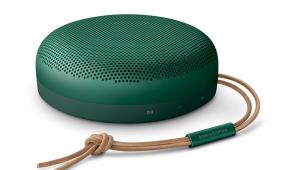
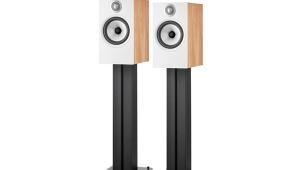

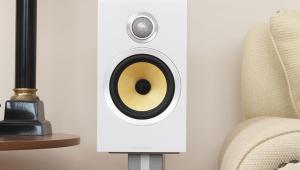
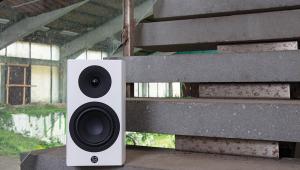
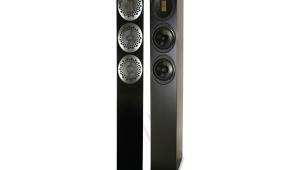




































.jpg)



